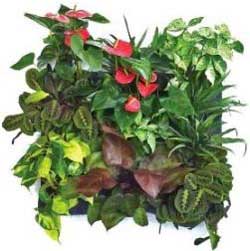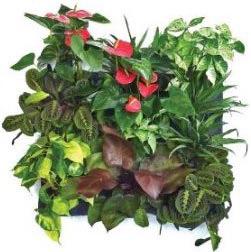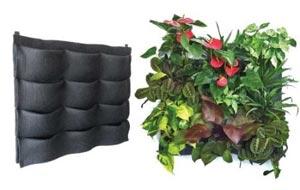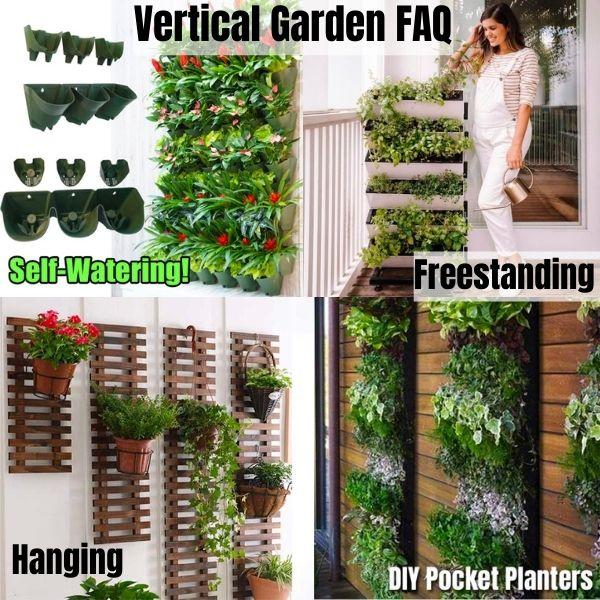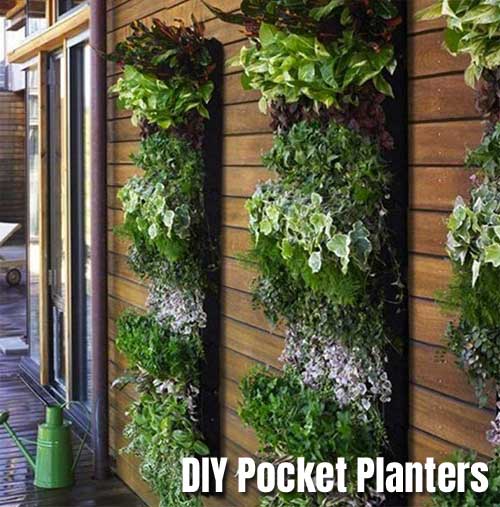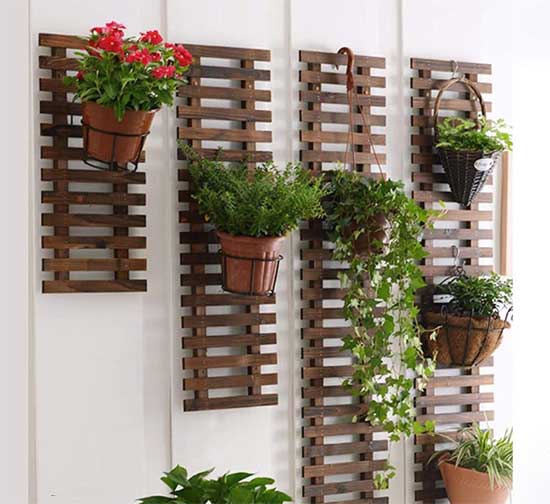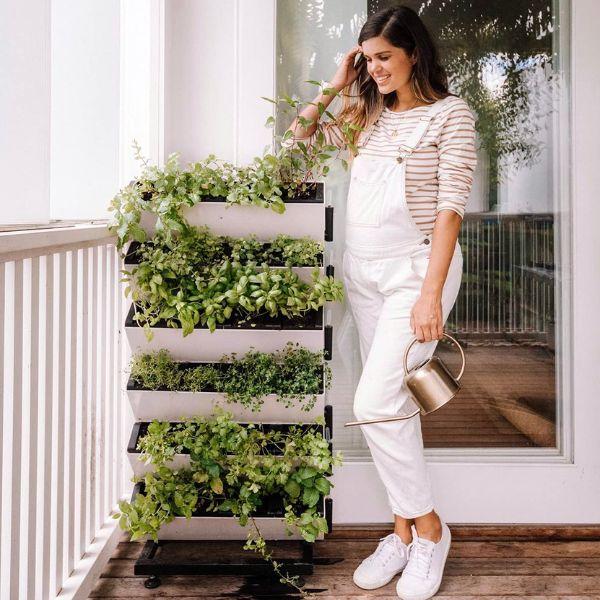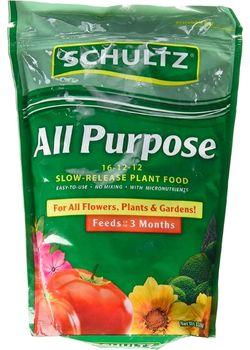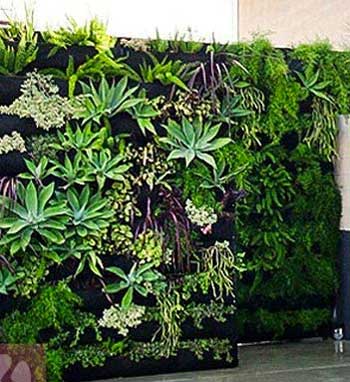Do you want to know how to make a vertical garden? Here are 7 tips and answers to frequently asked questions about building a healthy, low-maintenance living plant wall that you’ll love…
1. What Materials Do You Need to Build a Vertical Garden?
A. Vertical Structure
First of all, you’ll need a wall or fence where you can attach your planter. Alternatively, you can build a freestanding garden independent of other structures. You can also buy pre-made vertical garden kits, which eliminate a lot of the guesswork because you simply assemble the planter.
B. Planting Container
Second, you’ll need some sort of planter. You can use plastic flower pots, metal containers, fabric pockets or wood with plastic liners. Plus, some people recycle gutters, mailboxes or wooden pallets to create a custom-looking garden. Not to mention, you can save money too.
C. Hanging Hardware
Third, get hanging hardware to attach the planters to the wall, fence or post (ie screws, brackets, nails, hooks, etc..). If you buy a vertical garden kit, many of these packages include the hardware that you’ll need.
D. Planting Soil
Fourth, buy planting soil or compost. If you want to start plants from seed, get seed starting mix, which typically contains sphagnum peat moss, vermiculite or coconut coir. By the way, these materials make a good option if you want to keep your planter lighter in weight.
E. Plants
Fifth, choose the plants you want to grow. Some people decide to grow herb gardens too.
F. Irrigation
Sixth, select a watering system if you don’t want to water your garden by hand. A simple way to do this is buy a drip watering kit, connect it to a hose spigot and set it on a timer.
Some vertical gardens only need the top level irrigated, as the top levels drain down to the lower levels. Therefore, the entire garden gets watered automatically.
2. How Do I Install a Vertical Garden on a Wall?
To hang a planter on a wall, you’ll first need to establish a proper support system. Clean the surface and add any waterproofing sealer if necessary.
Some people choose to assemble a basic wood support frame, secure it to the wall and then hang the planter on the frame. This provides space and air flow between the foliage and the wall. Plus, it may make hanging easier.
Alternatively, you can just attach the planter to the wall. In either case, you can use a masonry drill bit to drill into stucco or brick, or wood screws to hang planters on fences.
3. What Plants are Best for Vertical Planters?
The ideal plants will depend on your area’s climate and the location of your planter. For example, sunlight, temperature and humidity. I like to focus on low-maintenance plants that don’t grow a large root system.
Many people like plants that grow to be full and bushy, therefore covering the planting container. For instance, ferns, spider plants, ivy, pothos, etc..
Other people like growing edibles like herbs, lettuces or strawberries. Succulents also make great vertical growers because they require minimal maintenance.
4. How Much Sunlight Do Plants Need?
The amount of light you need will depend on the plants you grow. Below are some ideas for different sunshine/shade levels:
- Full Sun Plants: Basil, rosemary, and thyme, plus succulents like sedum and sempervivum.
- Partial Shade Plants: Ferns, spider plants and some flowers lik petunias and impatiens.
- Full Shade Plants: Ferns, ivy and boston ferns.
5. How Do You Water Vertical Gardens – and How Often?
As we talked about above, you can hand-water your garden or connect a drip irrigation system. You can also set up mist irrigation.
- Manual Watering: This option is simple and low cost, and it may be the best choice for smaller gardens or if you only have a few plants.
- Drip Irrigation: Installing drip requires more work and cost up front, but it can keep your plants healthy with minimal care over the long run.
- Mist Irrigation: This method involves misting the plants with water. For plant varieties that like humidity, this can be a great option.
Watering frequency depends on the type of plants you’re growing, the climate, soil and drainage. Start with a routine watering every 1-2 days and adjust accordingly – you don’t want the soil to dry out, nor do you want roots to get water-logged.
In addition, schedule watering in early morning or evening, so you minimize water evaporation.
6. What is the Best Soil for Living Walls?
The best soil will depend on your plants. That said, here are a few guidelines.
- Drainage: Choose a good potting soil or a soil-less mix specifically designed for containers.
- Aeration: Adding perlite or vermiculite to the soil to allow proper air flow to the roots for healthier growth.
- Nutrients: More nutrition typically results in healthier, better-looking plants. Choose a mix that contains slow-release fertilizer pellets or mix in some compost.
- pH Balance: Some plants have specific pH requirements. For example, succulents and cacti generally prefer a slightly acidic soil with a pH between 5.5 and 7.5, while most herbs and flowers prefer a slightly alkaline soil between 6.0 and 7.5.
7. How Do You Care for a Vertical Garden?
Just like any plants in your yard, vertically-grown plants require a certain level of care. However, they can be pretty low maintenance, especially if you install an automatic watering system.
To keep your garden lower-maintenance, choose the right plants for your climate and sunlight. In addition, provide nutrient-rich soil that aerates the roots (like we talked about above). Also, establish a regular watering schedule that keeps the root system moist but not soggy.
Thereafter, simply prune any overgrowth or dead branches/leaves as needed. This can stimulate bushier growth for fuller, better-looking plants.
Also, potted plants benefit from regular fertilization. Look for slow-release granules or water-soluble fertilizer and add a couple times a year or per the manufacturer’s recommendations.

